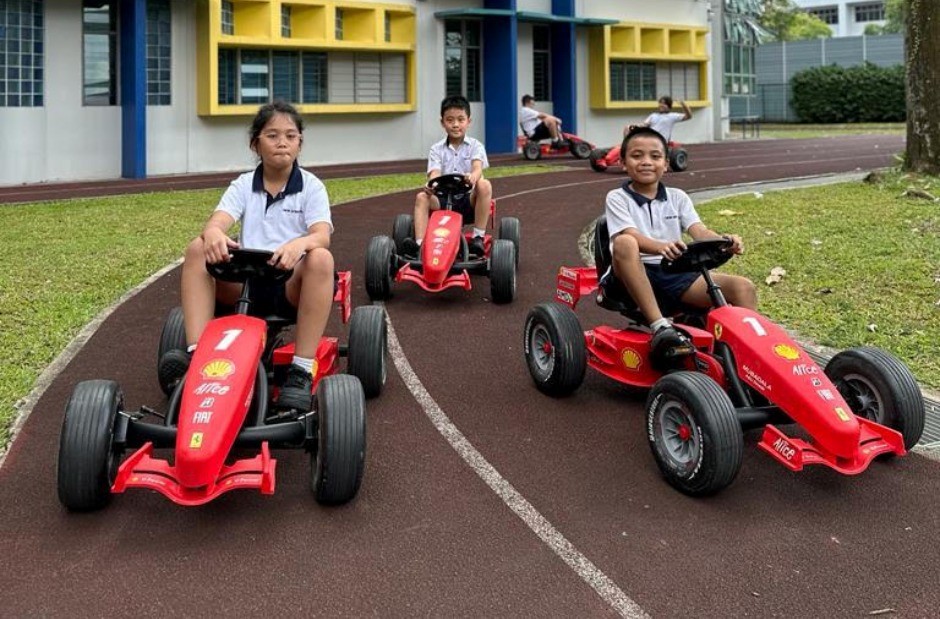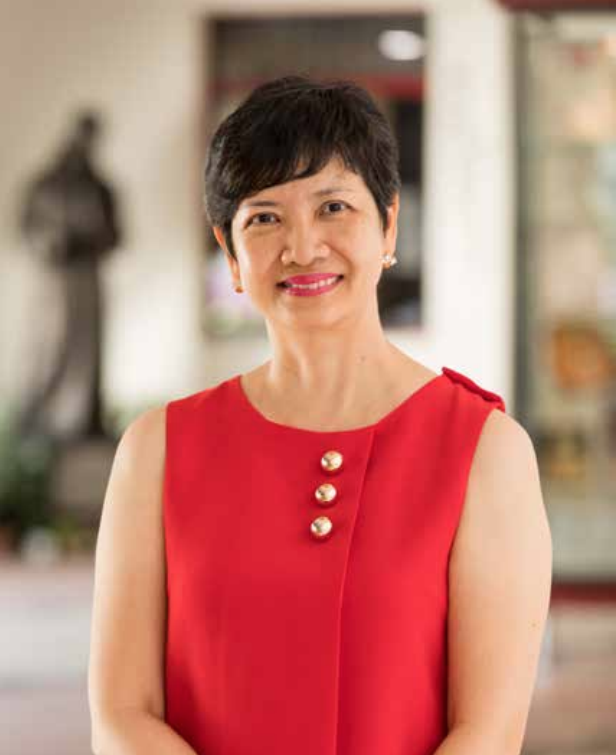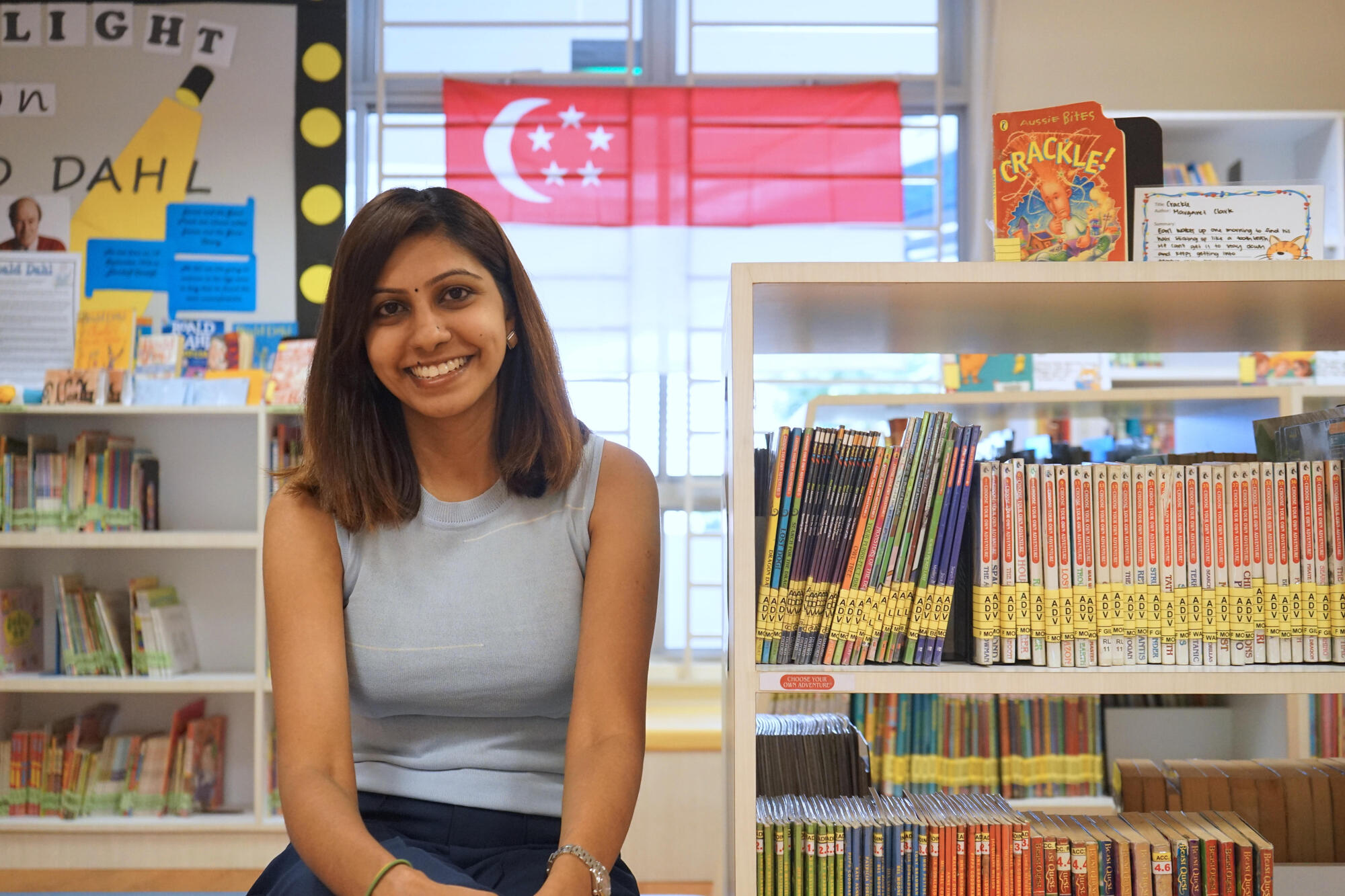A fun and safe space for students
“The Sandbox programme emerged from our desire to offer enjoyable and engaging experiences for students who are disengaged, lack a conducive home environment, or require support in their social-emotional needs,” says GESPS Year Head Mr Benjamin Gan, an Outstanding Youth in Education Award (OYEA) 2023 recipient.
 As students engage with each other in the GRIT Lounge, they forge stronger bonds.
As students engage with each other in the GRIT Lounge, they forge stronger bonds.
Currently a place for students to connect through childhood games such as claw machines, arcade basketball, air hockey and table soccer, the GRIT Lounge is also a safe space for students who need a listening ear. On regular school days, students can visit the Lounge during recess to meet with counsellors, Student Welfare Officers, teacher-mentors, and other support staff.
Students show their GRIT-itude
GRIT stands for Grow Relationships, Intervene and Transform. As its name suggest, the lounge is more than just a space for students to let their hair down. Mr Gan shares that it also acts as a special incentive for students who have demonstrated personal growth and a positive school attitude.
In this unique “arcade”, tokens are not the currency of choice. Instead, students earn the opportunity to have a go at the machines by “displaying school values”.
Students receive a GRIT Lounge ticket when they demonstrate outstanding behaviour or show significant improvements. For example, when they return lost items, consistently greet teachers politely, or responsibly dispose of litter in the dustbins.
Students who come to school regularly, even if they have family issues, or improve their punctuality can also get a chance to win this special ticket, says Mr Gan.
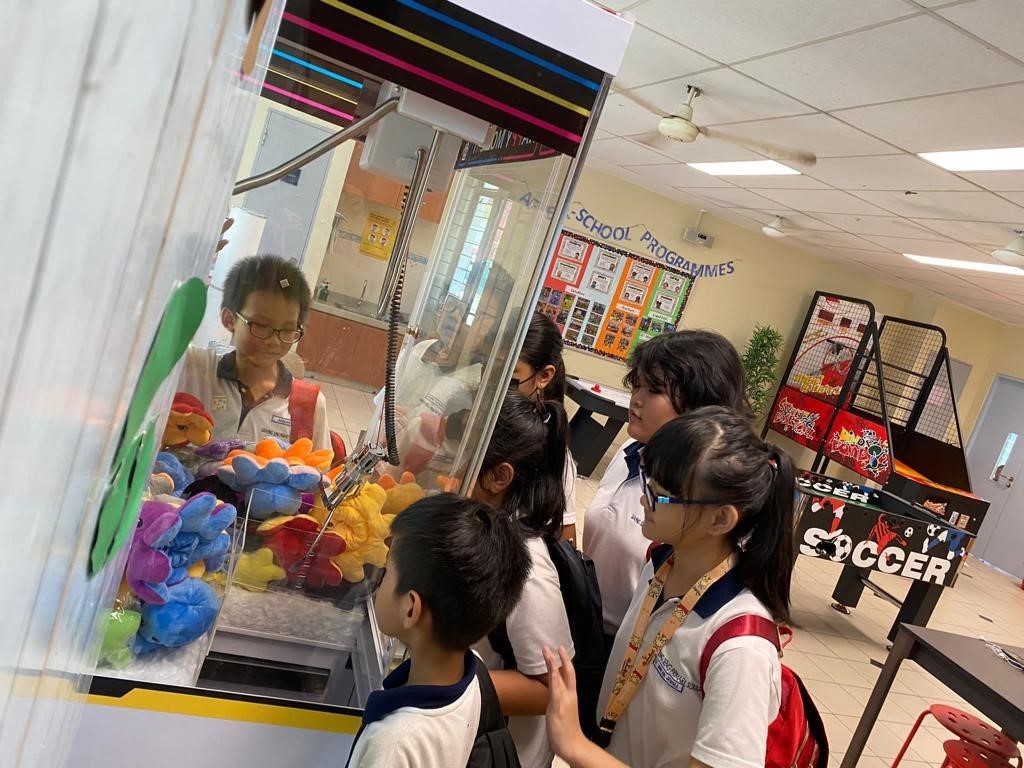 Students having a go at the claw machine in the GRIT Lounge. Mr Gan fondly remembers his childhood fascination with claw machines and hopes that students can experience his childhood joy.
Students having a go at the claw machine in the GRIT Lounge. Mr Gan fondly remembers his childhood fascination with claw machines and hopes that students can experience his childhood joy.
Letting students’ voices lead the way
Mr Gan, along with his colleagues from the Physical Education, Art and Music department chose to name the programme Sandbox as the word has a playful undertone and evokes the liveliness of a playground.
During the early days of Sandbox, basic team games and sports talks were led by volunteer befrienders from the Singapore Management University (SMU).
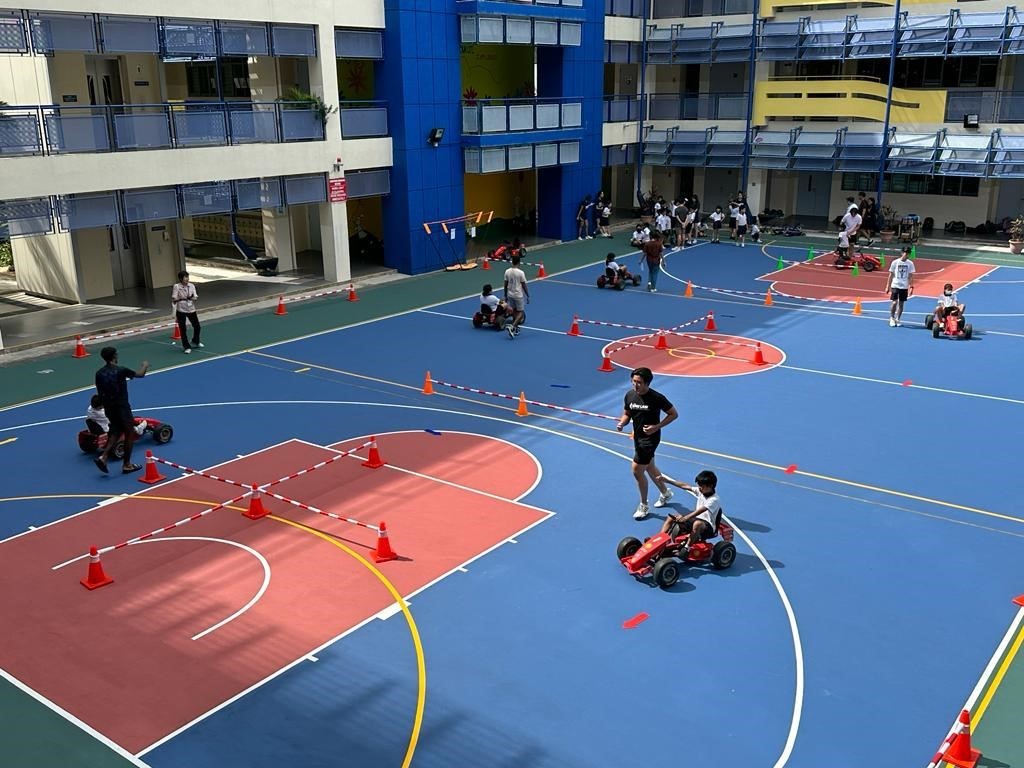 SMU volunteer befrienders taking on the role of go-kart marshals at Gan Eng Seng’s parade square, ensuring that all the fun stays on the right track.
SMU volunteer befrienders taking on the role of go-kart marshals at Gan Eng Seng’s parade square, ensuring that all the fun stays on the right track.
Much like Sandbox’s evolution, the introduction of arcade games in the GRIT Lounge was influenced by the students’ preferences. “We wanted to make sure that the GRIT Lounge is a hit with our students. A survey involving various student groups played a pivotal role in selecting these games,” says Mr Gan.
He adds, “We hope to build greater connectedness with our students, especially those who may not have a conducive home environment after school hours.”
By actively listening to what the students want, he and his team demonstrate that their voices matter in shaping their after-school experience.
“These activities help me to be more patient, and teach me to regulate my body and emotions to learn better in school. I hope that I can enjoy more Sandbox activities next year.”
Mentors as positive role models
GESPS invites volunteer befrienders from SMU to regularly participate in Sandbox activities. “They form bonds with our students and serve as mentors.” Mr Gan emphasises the significance of this partnership: “Our students regard the befrienders as older siblings and eagerly anticipate their time together.”
With teachers and mentors playing crucial roles in facilitating these activities, ensuring safety, discipline, and meaningful engagement, students undergo personal growth, strengthen their relationships, gain confidence, and develop a newfound love for school.
Furthermore, Mr Vaithilingam observes that students with irregular school attendance now look forward to attending school to meet with the friends they have made through Sandbox.
Primary 5 student Mahaletchumi D/O Shankar, who tried fencing for the first time as part of the Sandbox programme, lights up every time she talks about her after-school activities.
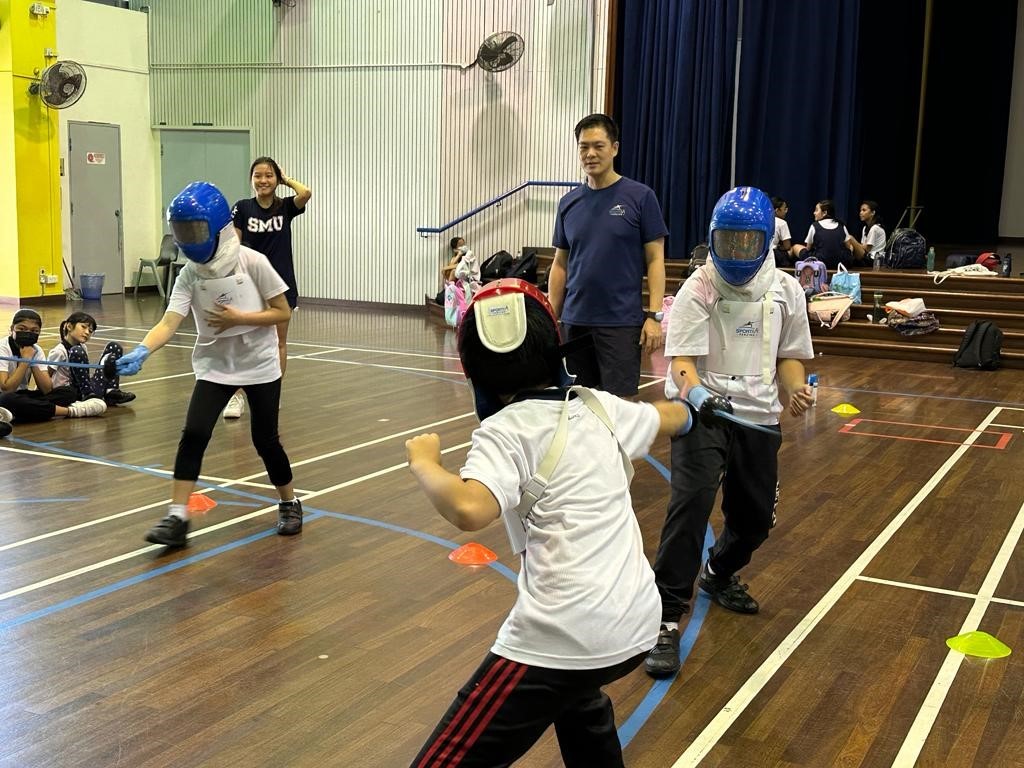 Students drop their guard and raise their swords as they venture into the world of fencing.
Students drop their guard and raise their swords as they venture into the world of fencing.
The programme benefits not just students; parents are also encouraged to participate. “Our year-end bowling activity was very well-received,” says Mr Gan. He points out that such activities offer parents a precious opportunity to connect with their children.
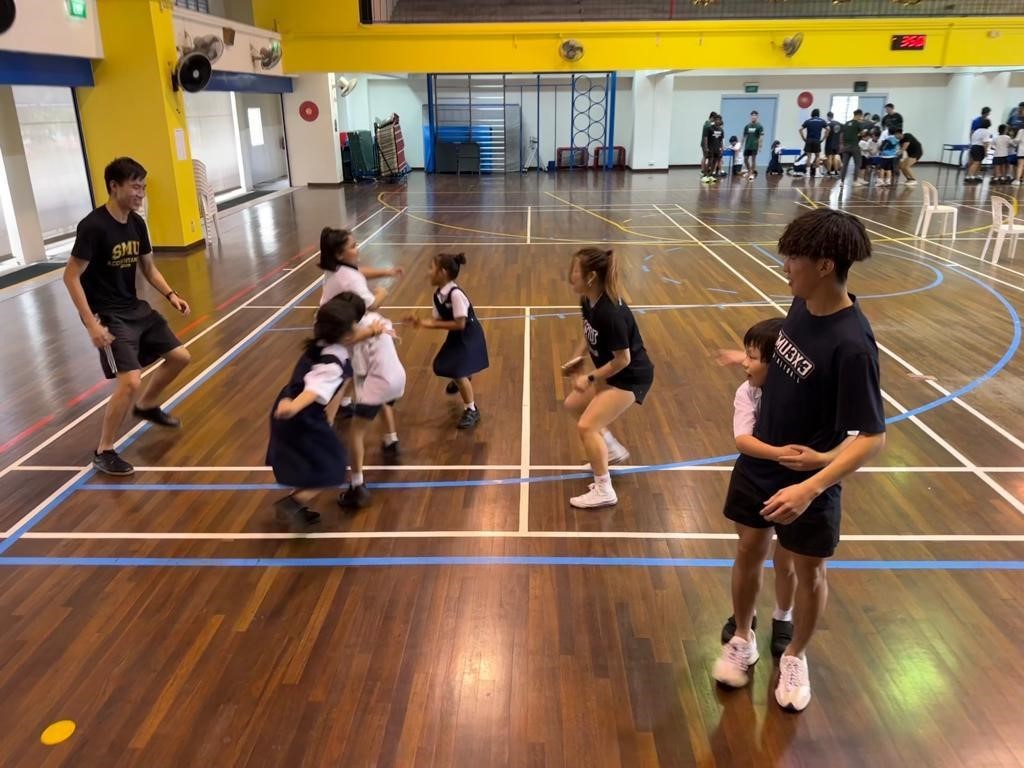 Students learn resilience, make friends and strive for their full potential through interactions with SMU befrienders.
Students learn resilience, make friends and strive for their full potential through interactions with SMU befrienders.
Building a sense of belonging
Given the promise of fun and excitement, it is no wonder that an increasing number of students are queuing up to take part. However, Mr Vaithilingam emphasises the need to strike a balance between inclusivity and maintaining a comfortable group size.
The objective is not to accommodate as many students as possible but to create an environment where bonds can be nurtured. By ensuring that group sizes are kept manageable, students have a better opportunity to connect with their peers and receive personalised attention.
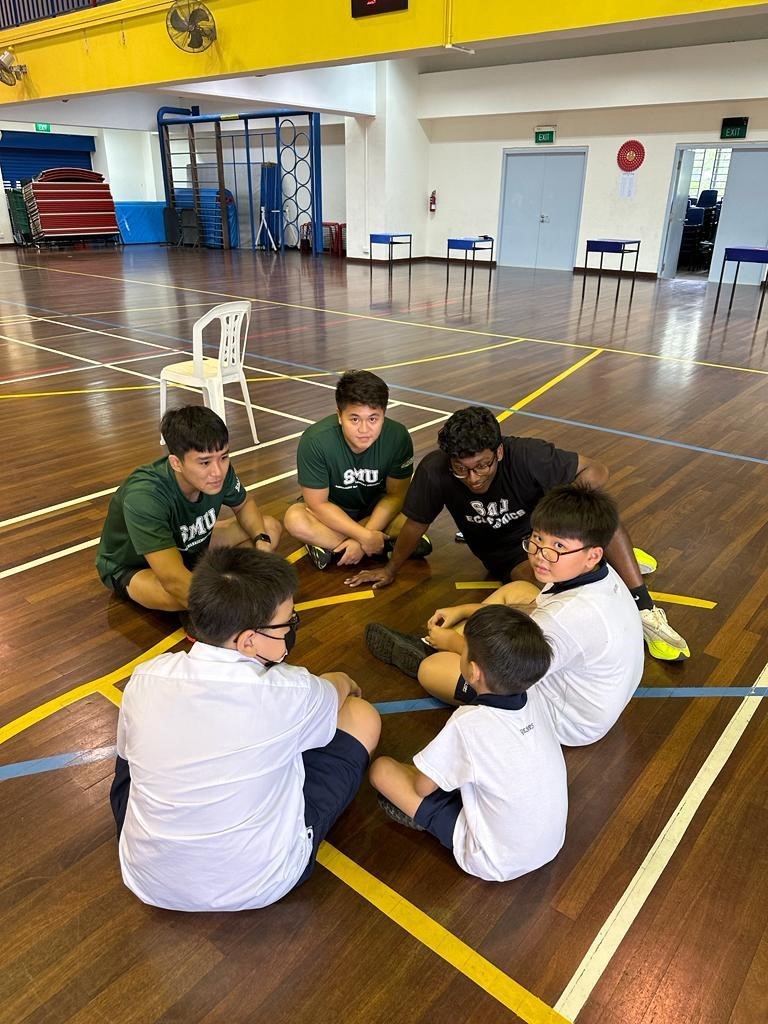 Keeping small and intimate group sizes, students openly share and listen without passing judgment.
Keeping small and intimate group sizes, students openly share and listen without passing judgment.
To many students, engaging in Sandbox activities after school goes beyond fun and games; it provides a safe space for them to build supportive relationships with their peers, teachers and mentors, and work on soft skills such as empathy.
“Before (taking part in Sandbox), I wasn’t very confident about making friends, but through Sandbox, I have made friends from different grades and classes,” says Primary 4 student Mahibah Shekh. “I also learnt about empathy. For example, when my friends get hurt or sad, I ask them what happened. When they tell me, I try to make them feel better.”



